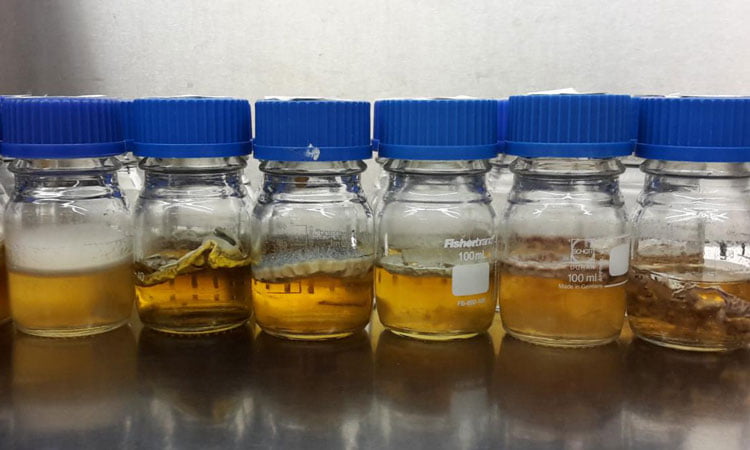Fungi library could aid in the search for medical drugs
Posted: 27 November 2019 | Rachael Harper (Drug Target Review) | No comments yet
A library of products derived from more than 10,000 fungi has been established which could lead to the discovery of new drugs.


Fungi growing at a small scale on liquid growth medium (credit: Jelmer Hoeksma, © Hubrecht Institute).
Researchers have set up a library of products derived from more than ten thousand fungi and screened it for biologically active compounds that could help to find reveal new therapeutics.
They tested the biological activity of these fungal products using zebrafish embryos as it enables the analysis of effects on many cell types at the same time, in a working body and because zebrafish are physiologically very similar to humans.
The researchers have already found various known compounds, among which include the cholesterol-lowering drug lovastatin and they have said the library offers further ample opportunity to search for new drugs.
The researchers were from the group of Jeroen den Hertog at the Hubrecht Institute, in collaboration with Westerdijk Institute and Utrecht University, all in the Netherlands.
“Every year new compounds produced by fungi are identified, but so far we have only investigated a very small subset of all existing fungi,” explained Jelmer Hoeksma, one of the researchers at the Hubrecht Institute. “This suggests that many more biologically active compounds remain to be discovered.”
Many more biologically active compounds remain to be discovered”
The researchers set up a large library of filtrates (which contains all the products that the fungus excretes) derived from more than ten thousand different fungi. The researchers found 1,526 filtrates that contain biologically active compounds with an effect on zebrafish embryos, from which they selected 150 filtrates for further analysis. From these, they isolated 34 known compounds, including the cholesterol lowering drug lovastatin, which was produced by the fungus Resinicium furfuraceum.
In addition, the researchers found filtrates that affect pigmentation in zebrafish embryos. Other studies have shown that factors involved in pigmentation can also play a crucial role in the development of skin cancer. The researchers are currently isolating the active compounds that cause pigmentation defects in zebrafish embryos from the filtrates.
The researchers say this study underlines the importance of further investigating these compounds in the search for new drugs. “The large library of fungal filtrates that we have set up can also be tested in many other systems, such as models for antibiotic resistance in bacteria and tumour development, making this study only the tip of the iceberg,” said Hoeksma.
The results of this research were published in Scientific Reports.
Related topics
Drug Discovery, Drug Discovery Processes, Research & Development, Screening
Related conditions
high cholesterol, Skin cancer
Related organisations
Hubrecht Institute, University of Utrecht, Westerdijk Institute
Related people
Jelmer Hoeksma, Jeroen den Hertog


